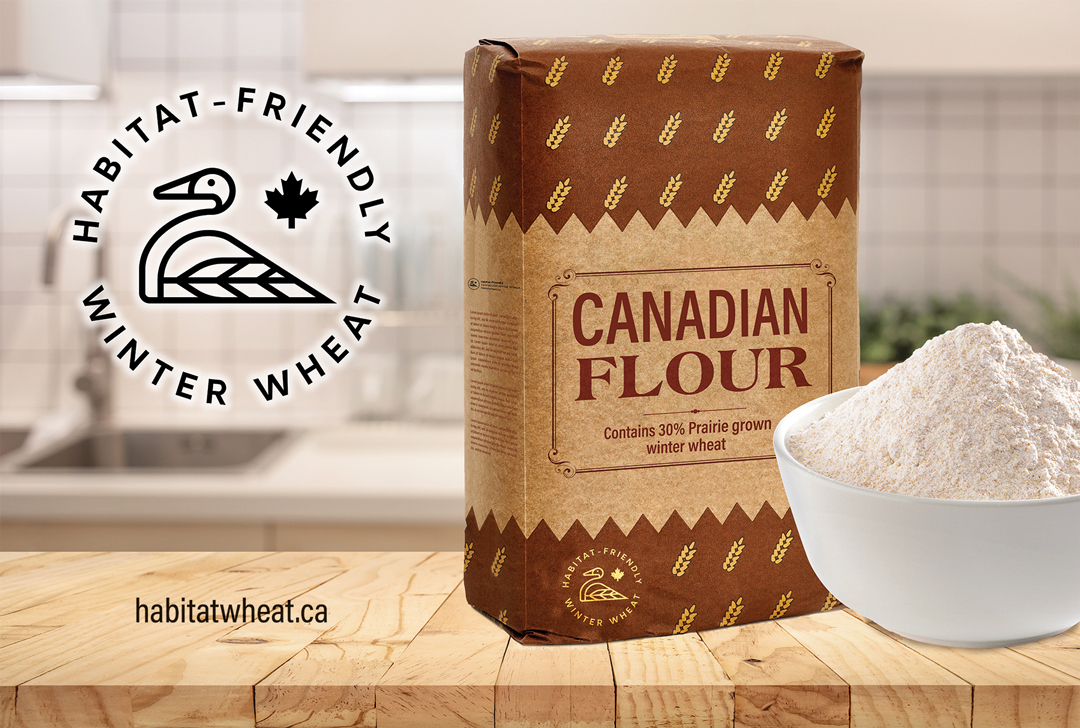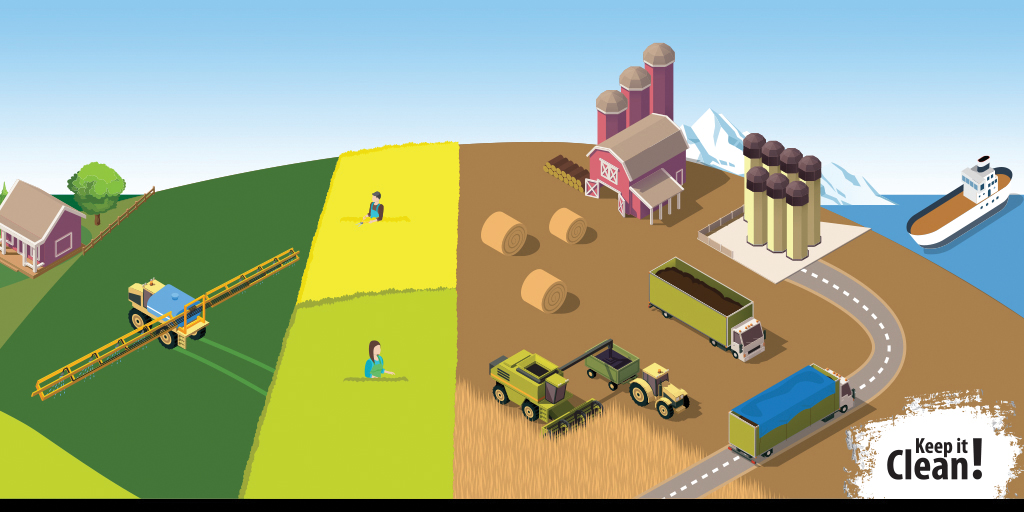ECOLABEL TAKES FLIGHT
BY ELLEN PRUDEN • PHOTO COURTESY OF CEREALS CANADA
Labelling agri-food products that support environmental initiatives is necessary to bridge the gap between farmers and consumers. This approach also presents a unique opportunity for food and beverage companies to demonstrate their own green ethos.
The Habitat-Friendly Winter Wheat Ecolabel ticks these boxes and has additional intrinsic benefits. Launched in November 2021, the project is supported by groups that span the agricultural value chain. These include Cereals Canada, Prairie winter wheat grower groups and end-users such as millers, other types of food processors and distillers. The initiative was driven by project partner Ducks Unlimited Canada. The conservation group’s research determined ducks that nest in winter wheat are 24 times more successful than those nesting in spring-planted cereal crops. Western Canada counted 261,642 seeded acres of Canada Western Red Winter (CWRW) between 2018 and 2022, of which 107,213 acres were in Alberta (41 per cent).
Alberta farmer Gary Stanford has grown winter wheat for more than a decade because of its many benefits. He is fond of its high yield potential and the habitat it provides for wildlife, especially waterfowl. Stanford, who farms near Magrath, typically seeds his winter wheat mid-September to ensure it reaches the third leaf stage before winter sets in. In spring, the young plants provide shelter for nesting birds. “It has been an honour to be involved in the Ecolabel since it started,” said Stanford. “It’s a win for winter wheat growers to have more markets, a win for flour millers, food processors and distillers as they can use sustainably grown winter wheat, and a big win for consumers.”
Not far from Stanford’s farm, Ecolabel user Rockport Flour Mills uses high-quality, whole wheat flour milled from both spring wheat and CWRW to produce Coyote pancake and waffle mix. The company grows its own wheat and also purchases it from area farmers. “Our advantage is we can mill the wheat and incorporate it into our products,” said Jake Wipf, Rockport production manager. “This supports our local farmers and the environment.”
To be eligible for the Ecolabel, food and beverage companies must integrate a minimum of 30 per cent CWRW into their products. While this class has lower protein content than Canada Western Red Spring, it is ideal for baked goods that do not require a lot of gluten strength, such as cookies and cakes, and beverage products such as distilled spirits and beer.
Additional Ecolabel partners include Les Moulins de Soulanges, a Quebec mill that produces specialty flours for artisanal bakers across North America. Beam Suntory, a global leader in premium spirits participates through its Northern Keep vodka brand, which is distilled in Calgary.
Rolling out the Ecolabel has had its challenges, said Leif Carlson, Cereals Canada director of market intelligence and trade policy. “Companies are interested in accessing CWRW to incorporate into their food and beverage products, but with limited acres and limited mills focused on CWRW, flour production poses a hurdle.”
Carlson emphasized the Ecolabel has been successful in demonstrating how farmers, the value chain and food companies work together for sustainability. “One consistent factor with the Ecolabel is we all care about the environment.”
For more information about the Ecolabel program, visit habitatwheat.ca.
Ellen Pruden is Cereals Canada director of communications.







Comments